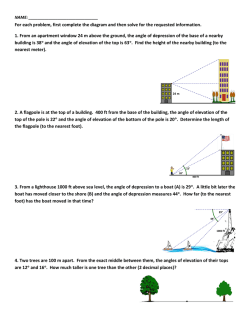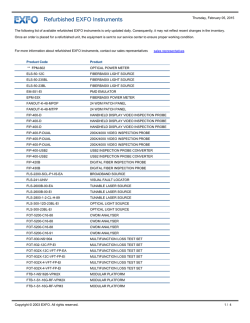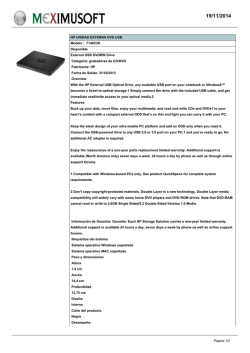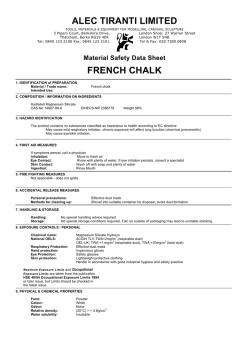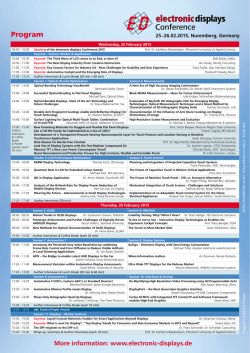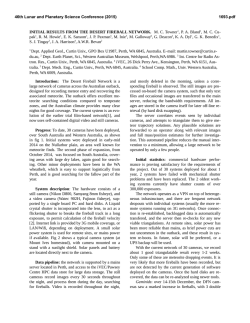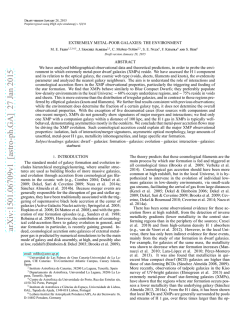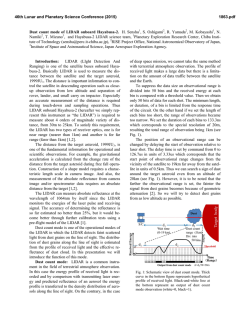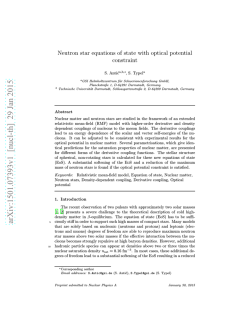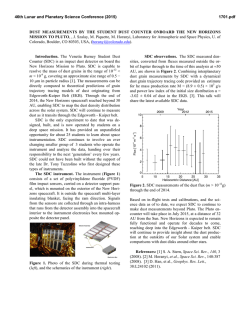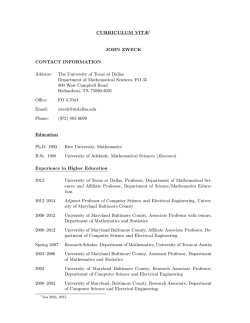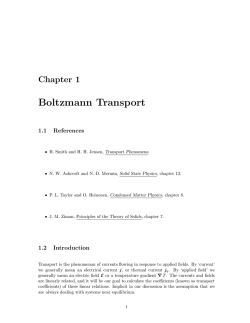
Using Engineering Cameras on Mars Landers and Rovers to
46th Lunar and Planetary Science Conference (2015) 2851.pdf USING ENGINEERING CAMERAS ON MARS LANDERS AND ROVERS TO RETRIEVE ATMOSPHERIC DUST LOADING C. A. Wolfe1 , M. T. Lemmon1 , 1 Texas A&M University, College Station, TX 77840 USA; [email protected] Introduction: Dust in the Martian atmosphere influences energy deposition, dynamics, and the viability of solar powered exploration vehicles. The Viking, Pathfinder, Spirit, Opportunity, Phoenix, and Curiosity landers and rovers each included the ability to image the Sun with a science camera that included a neutral density filter. Direct images of the Sun provide the ability to measure extinction by dust and ice in the atmosphere. These observations have been used to characterize dust storms, provide ground truth sites for orbiter-based global measurements of dust loading, and to help monitor solar panel performance [1]. In the costconstrained environment of Mars exploration, future missions may omit such cameras, as the solar-powered InSight mission has. We will present a simulation-based assessment of imaging strategies and their error budgets, as well as a validation based on archival engineering camera data. Procedure and Preliminary Validation : We seek to provide a robust capability of determining atmospheric opacity from sky images taken with cameras that have not been designed for solar imaging, such as lander and rover engineering cameras. One such method of deriving optical depth from non-solar sky images involves taking the ratio of sky radiance at two different elevation angles and generating a brightness profile. Near 90◦ away from a low Sun, the scattering angle is nearly orthogonal to elevation angle. In this case, the scattering angle controls the phase function (P) and the elevation angle controls the airmass (η). For the low optical depth limit, radiance (I) is proportional to optical depth (τ ) × airmass (η), but for high airmass and/or optical depth, multiple extinction becomes important [1]. To reduce errors from absolute calibration in the high airmass and/or optical depth case, we take the ratio of two measurements at the same scattering angle, but different elevation angles. The ratio method is a simplification: one can gain accuracy using an elevation () profile of dln(I)/d from a sky image, taken at constant scattering angle. This is analogous to multiple sun images at different elevation angles to calibrate solar optical depth. The following equation can be used to generate a brightness profile and thus derive optical depth: Z τ0 e−(τ0 −τ ) e−τ ηa ηa dτ Ia 0 ≈ Z τ0 Ib e−(τ0 −τ ) e−τ ηb ηb dτ 0 A set of ”truth” models was created with randomlyvaried parameters. Optical depth was derived with a new set of randomly-varied scattering parameters. Even with random errors in single scattering that are large compared to uncertainties, the model still derives an accurate optical depth. Below is a plot that was generated using the ratio method: Figure 1: Ia /Ib Brightness Profile (It is important to note that 95% of all visible optical depths measured on Mars are < 1.5.) Observational Validation Plan: Below are MER images obtained from the Planetary Data System (PDS). The image on the left is a typical or ’normal’ image, while the one on the right is contaminated by the way the light hits the Navcam optics. The contaminated image shows a baffle that shadows the optics. As a result, the Sun casts a shadow onto the window, which becomes visible due to the dustiness. (a) SOL 3848 (b) SOL 3733 Figure 2: Navcam sky images taken at roughly the same time of day and viewing angles Navcam images are taken when the solar elevation and azimuth angle are roughly 30◦ and 90◦ respectively to reflect the geometry in the model. Optical depth 46th Lunar and Planetary Science Conference (2015) has been modeled from the images, using the brightness profile at constant scattering angle. This can be compared to daily, solar-imaging optical depth measurements [2]. Observational Validation Results: Derived optical depths are shown below (red), and compared to the daily solar-filter optical depth record from Pancam [2]. The Pancam derivation includes a correction for optical depth on the windows; the Navcam data are shown with no dust-factor correction. Figure 3: Pancam vs. Navcam Optical Depth Despite the dusty optics, the derived optical depth values from Navcam non-solar sky images show a very good fit when compared to the Pancam data that utilized direct imaging of the Sun to retrieve optical depth measurements. Conclusion: With planetary science budgets getting ever tighter, it is not always possible to equip landers and rovers with science cameras with dedicated solar filters. This study has shown that aerosol optical depth can be derived, without imaging the Sun, from onboard engineering cameras. Future missions, such as InSight, will unlikely be able to directly image the Sun, but will be able to take (sometimes color) sky images, especially near the southern horizon. The encouraging results obtained from using the brightness profile method described in this abstract will hopefully aid InSight and other missions when it comes to retrieving atmospheric dust loading on Mars. Despite their basic purpose, engineering cameras can provide a good estimate of the amount of dust in the Martian atmosphere. References: [1] Lemmon et al. 2004. Science 306, 1753. [2] Lemmon et al. 2014. Icarus. (Article in Press). 2851.pdf
© Copyright 2026

